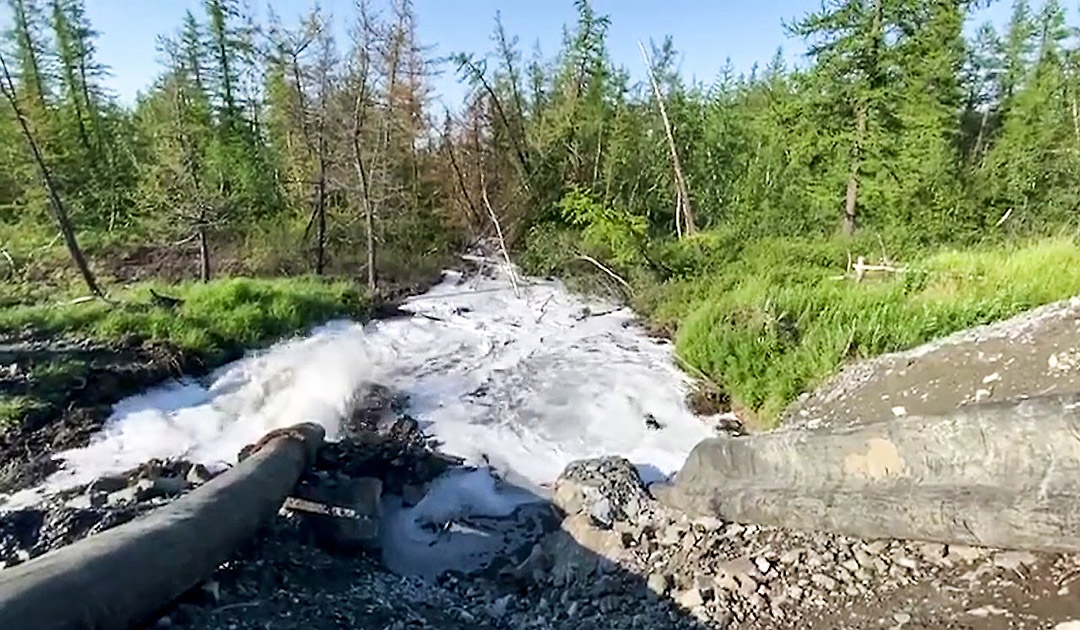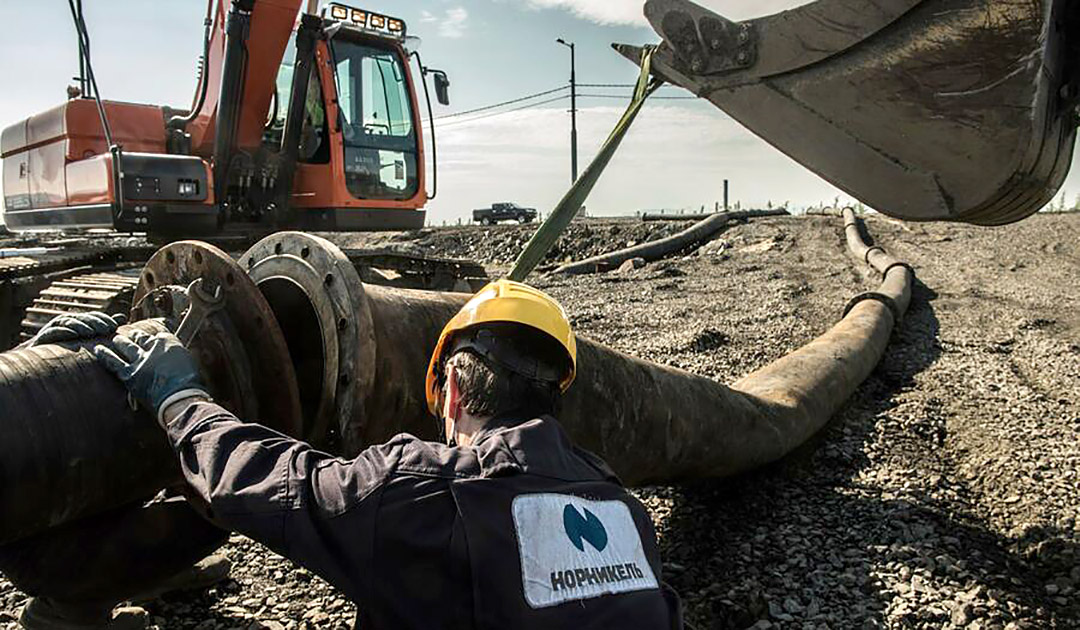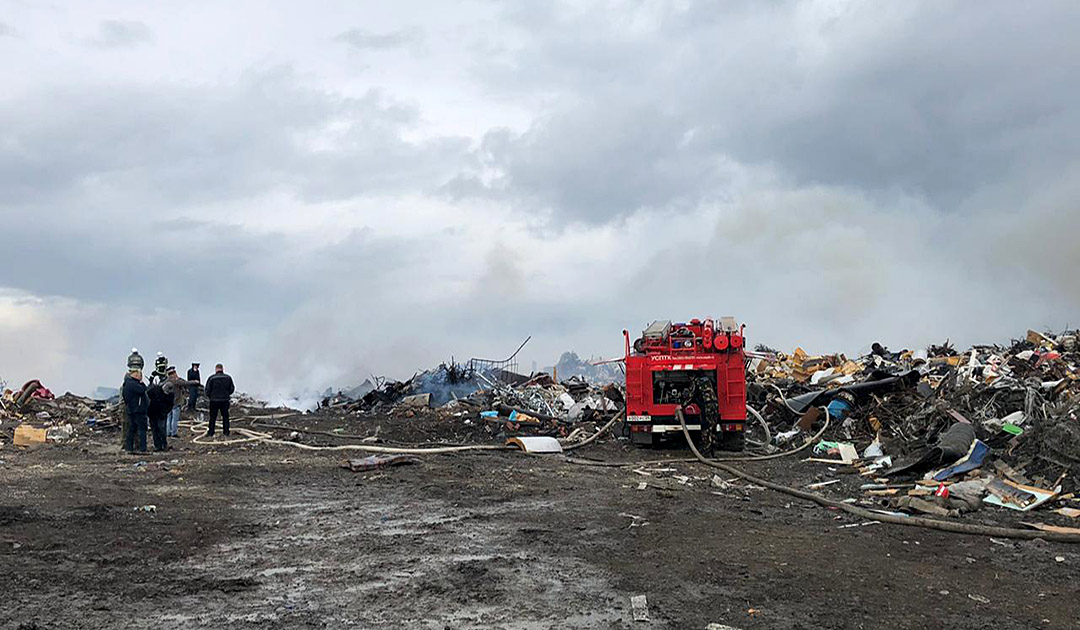
Russia’s Arctic has been hit by three separate environmental disasters involving mining giant Norilsk Nickel within a month. The company, led by metal tycoon Vladimir Potanin, has been accused of trying to cover up the extent of the damage.

1st incident – 21,000 tonnes of diesel spilled, May 29, 2020
The first eco-disaster occurred on May 29 2020, when about 21,000 tonnes of diesel leaked from the tank storage facility of a combined heat and power plant owned by the NornickelGroup. A huge tank appears to have slumped through the thawing permafrost floor and collapsed. The fuel entered the ground and nearby rivers and became a serious threat to the fragile ecosystem in this part of the Arctic. The company and its heavily dependent local authorities spent several days trying to conceal or trivialise the disaster.
Experts are talking about the biggest oil spill in the Russian Arctic due to the accident at the combined heat and power plant. The fuel spilled into the ground and colored the nearby waterways bright red. It was not until June 3 that a video conference convened by Russian President Vladimir Putin was held at which a state of emergency was declared. Additional forces from the Ministry of Civil Protection were then sent to Norilsk. In another video conference with Putin, Nornickel’smain shareholder, Vladimir Potanin, assured that his company would cover all the costs of repairing the environmental damage of an estimated 10 billion rubles, or about 127 million euros.
At least three managers were arrested, while the mayor of Norilsk and a federal inspector were charged with negligence.
Authorities said in late June that they had removed the spilled oil from the surface of a nearby river, but added that the full cleanup could take years.

2nd Incident – Wastewater Dump, June 28, 2020
Exactly one month later, on June 28, the first information about a second serious incident in Norilsk with clear potential for a new environmental scandal were made public. This time it was a settling basin or mud pond of a processing plant in the village of Talnakh, a subsidiary of the non-ferrous metal producer Norilsk Nickel. From such a settling basin, about 6,000 cubic meters of water contaminated with heavy metals and sulphuric acid were discharged into a stream and into the tundra.
Environmentalists notified the authorities. Ahead of them, however, the security service and staff of Norilsk Nickel showed up at the scene. After trying in vain to drive out the environmentalists, they hurriedly dismantled the pumping station and the pipes. In the zeal of the battle, they damaged a vehicle of the police, who also had arrived.

When asked by Vasily Rjabinin, a former employee of the Russian Environmental Agency Rosprirodnadzor, Nornickel confirmed the incident in a brief statement. However, it claimed that “technical water” swept over the dam on June 28 from the reservoir, which was overflooded after rainfalls, but was then stopped and pumped into the “adjacent area.”
The version of environmentalists and journalists sounds very different. Vasily Rjabinin, who has already set out everything in a detailed letter directly to President Putin, reports that he had visited the settling basin with a correspondent of the news platform Novaya Gazeta on June 20. In the vicinity, he previously had discovered numerous unnaturally colored lakes on Google satellite images. In photos taken on site with a drone, he then discovered two pipes pumping water from the reservoir into the creek.

On June 28, environmental activists specifically searched for this spot at the settling basin. They found two pipes from which water with a strong chemical odour was pumped into the surrounding area. They then photographed and filmed the outgoing liquids and the dying trees all around. Shortly afterwards, in addition to Nornickel employees and police officers, workers also showed up, who hurriedly shut down the pumps and dismantled the pipes.
To determine the level of pollution, environmental activists on the ground have taken water samples from the lake and its tributaries. On June 27, the deputy of the Moscow City Duma, Sergei Mitrochin, wanted to bring the samples to Moscow for an independent investigation. But at Norilsk airport, he was banned from taking samples with him. The justification states that any samples may be exported ‘only with the permission of the Combine’ (Association of industrial enterprises).

3rd Incident – Landfill Fire, June 29, 2020
Less than 24 hours later, news agencies reported that a large fire had broken out at an industrial waste dump outside Norilsk, with smoke billowing towards tundra. Emergency officials said they had located the fire and that the nearest buildings were not under threat.
Norilsk Nickel denied owning and storing industrial waste at the landfill. “We are depositing bricks, concrete and household waste there, but no industrial waste,” a spokesman for the landfill told state news agency TASS. “According to our information, there is no harmful or dangerous waste there.”
On the spot, it was reported that the rightful owner of the landfill, Baikal-2000, is engaged in the treatment and disposal of non-hazardous waste. Prosecutors said they still plan to review the landfill for compliance with environmental and fire safety laws.
Allegation of cover-up
Activists and journalists have accused Nornickel of downplaying the scale of these disasters. This is mainly due to ‘nepotism’ between the authorities and the group. “Nornickel has been the enemy number one in the North for many decades. Toxic fuel from the massive diesel accident on May 29 may have already reached the Arctic Ocean, despite claims of successful clean-up. This was claimed by environmental activist Georgy Kavanosyan in a recent video conference. Kavanosyan accused Potanin of trying to cover up the extent of the damage.
Heiner Kubny, PolarJournal





